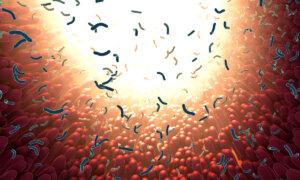In a medical mystery that has left researchers puzzled, an unexpected surge in cases of Creutzfeldt-Jakob disease (CJD), a rare and fatal degenerative condition, has emerged.
What Is CJD?
CJD is a rare brain disorder marked by distinct alterations and rapid deterioration of brain tissue that affects muscle coordination, cognition, and memory. It is caused by a transmissible pathogen known as a proteinaceous infectious particle, or prion. This pathogen induces abnormal folding of prions abundant in the brain, resulting in swift and severe brain damage, ultimately leading to death. Seventy percent to 95 percent of people diagnosed with the condition die within a year.Prions resist conventional methods used to treat other pathogens. They withstand extreme heat and radiation, which are usually effective against bacteria and viruses, and remain impervious to antibiotics and antivirals.
Unprecedented Increase in CJD Cases
Researchers analyzed death certificate data from 2007 to 2020, revealing an elevated incidence of CJD. Out of 5,882 CJD deaths during this period, a little more than 50 percent occurred among women, according to the research letter published in JAMA Neurology.There was an increase in incidence to 1.58 per million cases from 1.06 per million in women and to 1.47 per million in men from 1.05 per million. Adjusting for age, the rise was significant for women but not men.
“Our findings indicate the reported incidence of CJD has risen considerably, disproportionately affecting older and female individuals,” the authors wrote.
The research appears to be well-conducted, but the brevity of the research letter is an issue, Dr. Jessica Robinson-Papp, professor and vice chair for clinical research at the Department of Neurology at the Icahn School of Medicine at Mount Sinai, told The Epoch Times.
“[The letter is] very short, which gives the authors less opportunity to thoroughly explain the work,” she said.
Behind the Rise in Cases
There are three explanations for the study findings, Dr. Marc L. Gordon, chief of neurology at Northwell Zucker Hillside Hospital in New York, told The Epoch Times. They are as follows:- People are living longer, and people’s longer lifespans alone contribute to an increased likelihood of developing CJD.
- We’ve developed much better ways to identify the disease.
- We’ve gotten better at recognizing the MRI findings suggestive of CJD.
Dr. Gordon highlighted modern techniques such as the cerebrospinal fluid real-time quaking-induced conversion test, which enables precise diagnosis by detecting signs of abnormal prions in patients’ spinal fluid.
“That was a test that only became available relatively recently,” he said.
Case Reports Link COVID-19, Pfizer Shot With CJD
Adding to the mystery of multiplying cases, a paper published in September 2023 in the American Journal of Case Reports suggests a correlation between COVID-19 infection and the onset of prion disease.In one case study, a 62-year-old man at Mount Sinai Queens Hospital Center in New York exhibited difficulty walking and signs of rapidly progressing dementia. The case report noted that he “experienced worsening neurological function after having been COVID-19-positive on admission.” The man was ultimately diagnosed with prion disease.
Although the study authors asserted a likely connection to COVID-19, they stressed the need for more research, citing the absence of evidence beyond coincidental findings.
The authors highlighted the mRNA in the Pfizer vaccine, suggesting its potential to bind to specific proteins and induce “pathologic misfolding” typical in prion disease. They noted the mRNA’s translation of the spike protein, which can increase intracellular zinc, is known to trigger the conversion of TAR DNA-binding protein into its pathological prion form.







